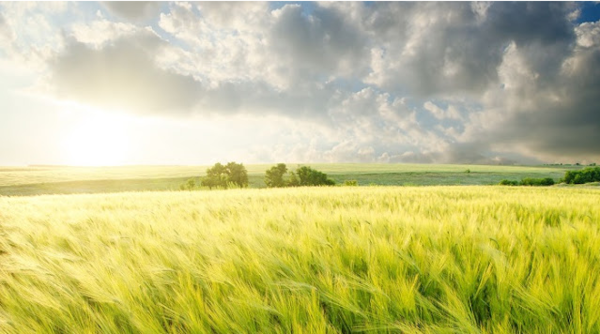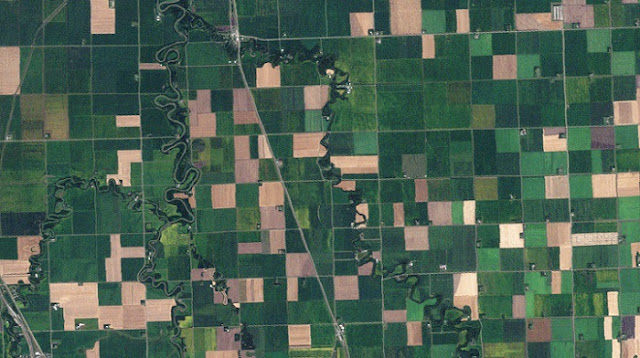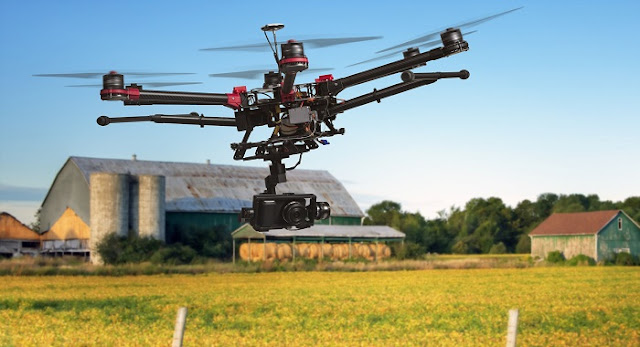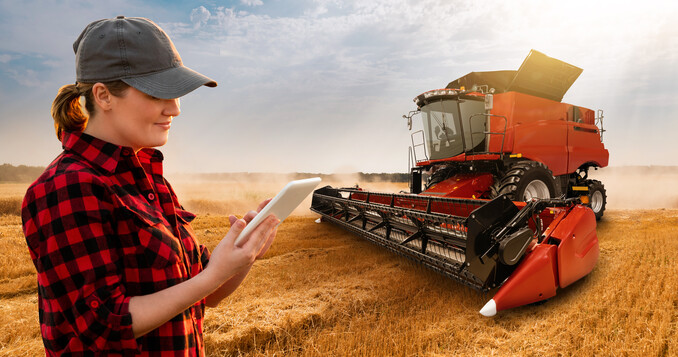Precision Farming Technology and the Future of Agriculture

The agriculture sector has undergone a significant transformation in the last 50 years, with advancements in machinery leading to more efficient land use and increased productivity. Newer technologies, such as precision farming, utilise data and connectivity. It can further revolutionise the industry by using artificial intelligence, analytics, and connected sensors to enhance crop yields, improve the use of inputs like water, and promote sustainability and resilience in crop cultivation and animal husbandry.
Efficiency-Boosting Advanced Surveillance System

Precision farming using advanced technology, such as satellite imagery, can provide farmers with detailed information on their land and crops. By incorporating satellite data, farmers can use imaging processes to observe, measure, and make decisions on crop management. This method is particularly effective on large-scale farms with multiple fields. Through satellite images taken over some time, farmers can determine the best areas to plant their crops and predict potential yields. Drones have also become a popular tool in precision farming, especially for mid to large-scale operations. Drones are useful for observation and inspection and are also a cost-effective alternative to satellite imagery services as they can be purchased outright.
Agriculture's New Helper: Unnamed Aerial Vehicle Drone

The latest agricultural drones are equipped with advanced technology, such as mapping and sensor capabilities, that can provide farmers with detailed information on their land and crops. These drones can create aerial maps, 3D imaging, surveys of the land, and count plants and crops. This grain handling equipment also has an emergency response system for sustainable agriculture harvesting. The sensors on these drones can also assess the health of plants and crops and water quality and create a vegetation index calculation. With the use of thermal and LiDAR sensors, farmers can have an in-depth view and record of their crop, which can provide information that was not previously accessible to maximise crop management on large scales. By keeping tabs on the crop, farmers can maximise the precise harvest time, minimise crop loss and maximise crop profits. With the ability of these drones to measure plant height, number, and health, farmers have the perfect opportunity to create the most efficient farm possible. Other than that, it also contributes to risk reduction and disaster management.
Insights-Driven Farming Enabled by Artificial Intelligence

The Agricultural Equipment Manufacturers (AEM) predicts that Artificial Intelligence (AI) will play a significant role in agriculture over the next decade. According to the AEM, the agriculture industry is well-suited to leverage large amounts of data from the Internet of Things (IoT). AI can be used to analyse this data to provide farmers with insights and recommendations for decision-making. AI can also improve equipment performance and make the operation more efficient. This technology is already being demonstrated by companies such as John Deere and Precision Planting, which use AI and image recognition in their innovative sprayers.
Additionally, machine learning can predict when equipment will require maintenance, reducing labour costs and expenses. The AEM report shows a 24% increase in net returns when using autonomous equipment, which is assumed to be lighter and smaller than current machines. The report concludes that AI will be invaluable for farmers as they are expected to produce more with less environmental impact.
The shape of the future agriculture with precision farming

Precision farming technology is rapidly changing the way we grow and manage crops, and it has the potential to revolutionise the entire agriculture industry. From increasing yields to reducing costs, it offers a wide range of benefits that will shape the future of agriculture.
Metrics for monitoring
By using digital tools, farmers can continuously monitor a variety of metrics, such as rainfall levels, nutrient requirements, soil samples, and fertiliser inputs. This allows them to gain a deeper understanding of the state of their crops and make more informed decisions across all fields.
Increasing yields
One of the most significant benefits of this is increasing crop yields. Farmers can optimise planting patterns, irrigation, and fertilisation using data and analytics in real time. This method results in more efficient use of resources, leading to higher yields and increased profits. Additionally, it allows farmers to monitor crop health and identify potential issues early on, reducing the risk of crop loss.
Reducing costs
Precision farming also helps farmers reduce costs. By using data to make informed decisions, farmers can minimise inputs such as water and fertilisers, which can save money and help preserve natural resources. Additionally, this technology can increase the efficiency of farm equipment, reducing the need for costly repairs and downtime.
Improving sustainability
Precision farming also allows farmers to improve the sustainability and resilience of their operations. By using data to monitor and optimise crop cultivation and animal husbandry, farmers can reduce their environmental impact and build strength against weather-related challenges. Additionally, this technology can help farmers reduce their dependence on synthetic pesticides and fertilisers, promoting a more natural and sustainable approach to farming.
Increasing efficiency
One of the vital elements of precision farming is connected sensors. These sensors can be placed in the field to monitor everything from soil moisture and temperature to crop health and animal behaviour. The data collected by these sensors is then analysed and used to make informed decisions about planting, irrigation, and fertilisation. Additionally, these sensors can remotely control farm equipment, reducing the need for manual labour and increasing efficiency.
Machine learning
Another critical aspect of precision farming is machine learning. These technologies can analyse large amounts of data and predict crop yields and other factors. Remote control tools are also an essential aspect of precision agriculture. These tools can remotely control and operate farm equipment, such as tractors and harvesters. This technology can help farmers reduce labour costs, increase efficiency, and improve safety.
In conclusion, precision agriculture is a modern approach to farming that utilises data sensors, connected devices, remote control tools, and other advanced technologies to give farmers more control over their fields and operations. This approach allows agriculture managers and farmers to adapt to and predict environmental changes, reduce risks when creating distribution strategies, and make informed decisions. This method can help them optimise crop yields, reduce costs, and improve sustainability.
